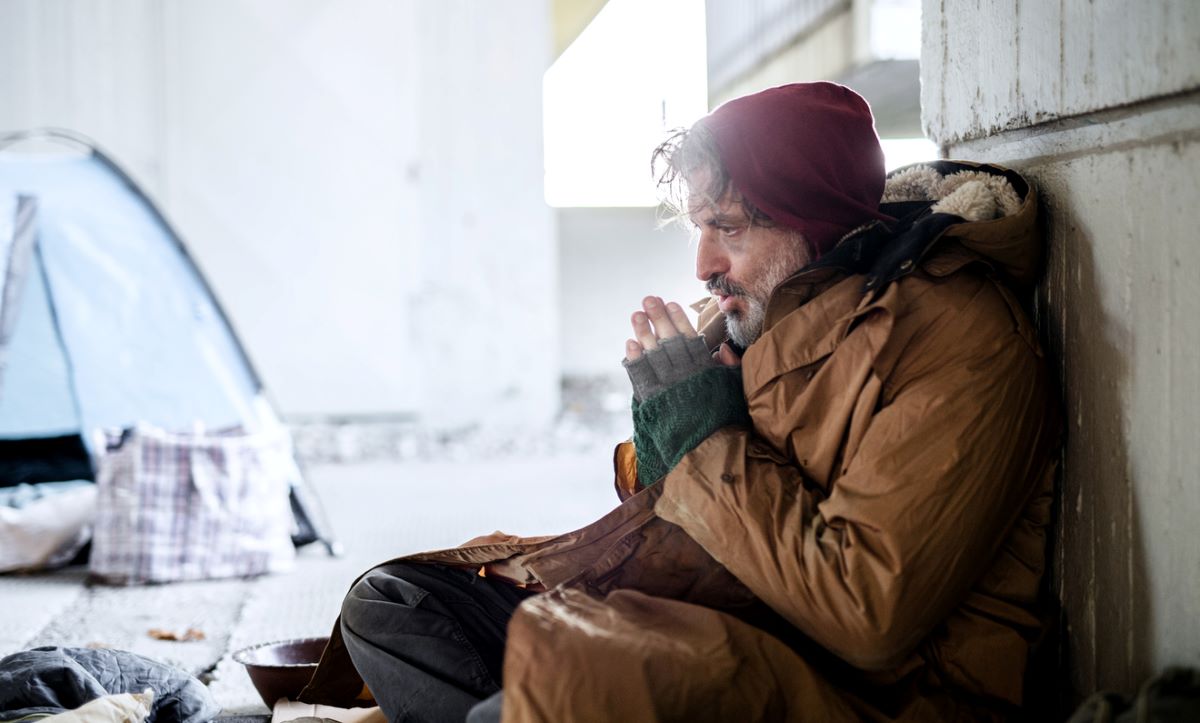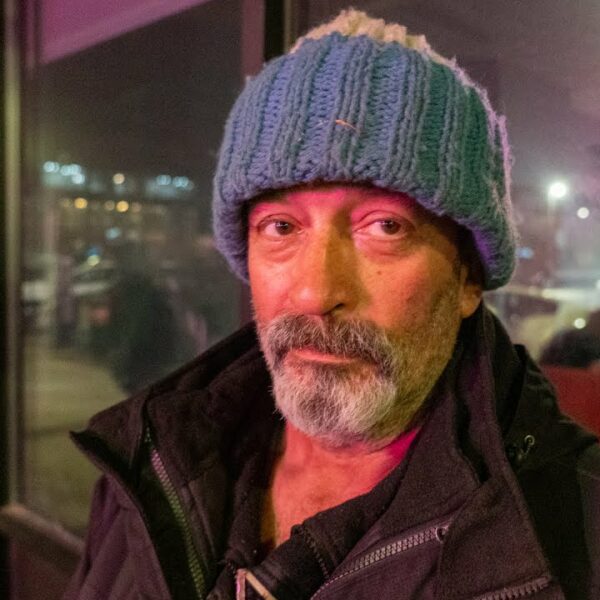Struggles to Keep Warming Centers Open Highlights Bigger Issues for Homeless Service Providers Across the Country
Cities across the country have struggled to open temporary warming centers for people experiencing homelessness despite temperatures persistently dropping below freezing. Experts say this points to several broader issues many homeless service providers face.
Warming centers are often the only place of refuge for many of the country’s unsheltered homeless people on freezing nights. They not only provide a warm place to lay one’s head, but some also offer free food and hot beverages to their guests. However, these centers face significant challenges from low funding and staffing levels to coordination issues with their local partners. Individuals who have used some warming shelters also said that their living conditions were inadequate.
“These are places that people experiencing homelessness go because their life is threatened,” Tristia Bauman, a senior attorney at the National Homeless Law Center, told Invisible People in an interview. “These centers not only provide them with an environment they need to survive but also provide them with a little dignity as well. No one should be left outside during a winter storm just because they’re homeless.”
About Warming Centers
Warming centers are short-term emergency shelters that open during extreme cold weather events. Municipalities often use libraries, recreation centers, or similar public buildings as warming centers during the winter months. Nonprofits and private organizations also operate warming centers, oftentimes in churches or other large structures.
These centers must go through the same steps before they can open. They include:
- Securing additional funding
- Finding staff to operate the center, and
- Getting a conditional use permit from their jurisdiction.
Many cities expanded their use of warming centers during the pandemic as demand for non-congregate shelter space increased. However, the increased demand has created several issues that homeless service providers are trying to overcome.
Practical Issues
Jennielynn Holmes is the chief program officer of Catholic Charities of the Diocese of Santa Rosa, a nonprofit. Holmes told Invisible People in an interview that staffing has presented the most significant challenge so far. She added that it highlights the broader issues many homeless service providers face.
Catholic Charities of Santa Rosa recently received criticism from community members who said the organization should have opened its warming center days before a cold front hit the area. But, Holmes said the organization couldn’t open its doors because it didn’t have staff to operate the center. Not only do California labor laws require employers to give employees at least eight hours between shifts, but Holmes said several of Catholic Charities’ employees were out with COVID-19 at the time.
Instead of opening the warming center, Catholic Charities provided heaters and winter clothes for people who slept outside before opening its doors two days later.
“We want to make sure people who don’t have resources are safe when these cold-weather events happen,” Holmes said. “But with a finite number of resources, we have to make a decision about what is most critical to provide.”
Coordination Issues
People experiencing homelessness in other parts of the county have also struggled to access warming centers. This is partly due to coordination issues among city officials.
For example, Denver officials did not post information about designated warming centers ahead of a snowstorm that brought subzero temperatures to the city in late February. This prompted Councilwoman Candi CdeBaca (District 9) to raise concerns with several city departments, emails provided to Invisible People show.
According to the emails, Denver’s Department of Housing Stability, which oversees Denver’s shelter system, told CdeBaca’s office that “no shelter or outreach expansions” were being considered ahead of a snowstorm beginning on February 22. The reason cited was the city’s shelters have “capacity for increased hospitality” and outreach teams that “continue to prioritize connecting people in need to shelter during cold weather.”
The high in Denver was nine degrees that day and would drop to below zero that night.
It wasn’t until nearly 5:00 p.m. that night that Denver officials at the Department of Parks and Recreation (DPR), which oversees warming center operations at municipal recreation centers, announced that its warming centers were open. The announcement came nearly six hours after CdeBaca inquired about them. By that time, temperatures had dropped to below zero degrees with the wind chill.
Invisible People spoke with Cynthia Karavaski, a spokesperson for DPR. When asked about the department’s policies for opening its warming centers, she said the agency doesn’t keep track of when it opens the centers because “our centers are always open for anyone that may need to come in from the heat or the cold.”
Several mutual aid organizations in Denver said they helped connect people with additional shelter before the warming centers opened. They said they even helped an individual they found stranded outside a city recreation center that had closed at 9:00 p.m. that night.
“We asked [Denver] to prepare ahead of this cold spell by opening warming centers, an emergency shelter, providing hotel vouchers, and doing significantly more outreach on the streets. The City chose not to provide an emergency pop-up shelter, even though [Denver] knew this was coming,” the groups said in a statement.
Living Conditions
Some people who access warming centers are finding that their living conditions are less-than-adequate, at best.
New Haven contracted with BH Care, a private service provider, to house more than 115 people experiencing homelessness at The New Haven Inn through April. The program offers two daily meals and additional mental health treatments and social services for residents who need them.
While city officials have applauded the care provided by BH, several residents have described their living conditions as “unsafe,” according to a report by The New Haven Independent. Some of the issues found include exposed plumbing, crumbling drywall, and mattresses littered with stains.
Others have complained of doors that won’t lock and needing rodent powder to keep the rats out of their rooms. When these conditions were raised with BH staff, some residents said they were threatened with eviction.
“I need to get out of here because they ain’t helping me. They’re hurting us,” one of the residents said.
Some BH staff members have left their jobs because of how people experiencing homelessness at the Inn have been treated. One former employee said they witnessed managers making residents “feel like they are nothing” after asking for additional food or clothes.
BH Care did not respond to Invisible People’s requests for comment.
How You Can Help
The pandemic proved that we need to rethink our housing policies. As the need for non-congregate shelter has increased, so has the demand for warming centers and other places of refuge from extreme weather. However, these places can be difficult for people experiencing homelessness to access.
That’s why we need you to contact your lawmakers. Tell them that you support policies that make it easier to open centers that help people escape from the elements. Tell them to invest in solutions rather than trying to sweep the issue under the proverbial rug.













